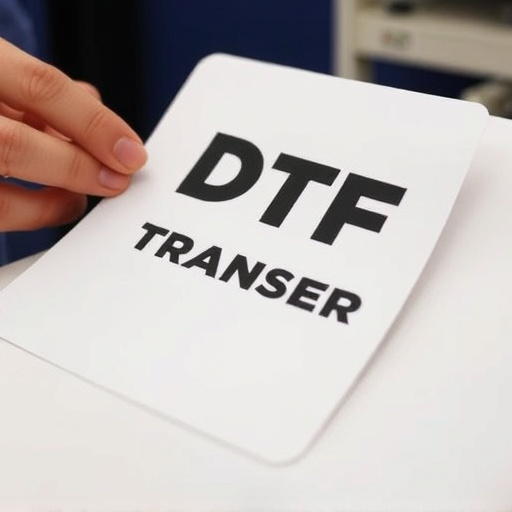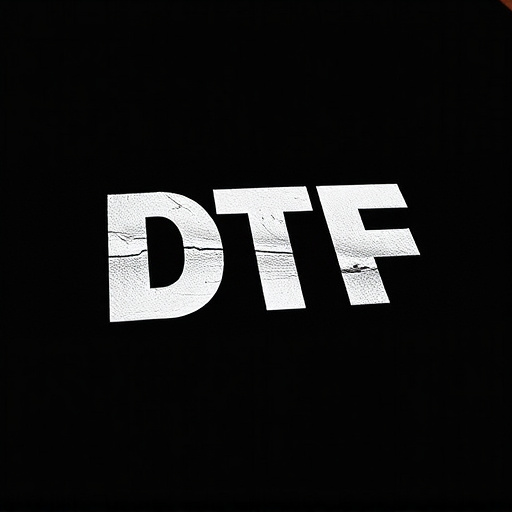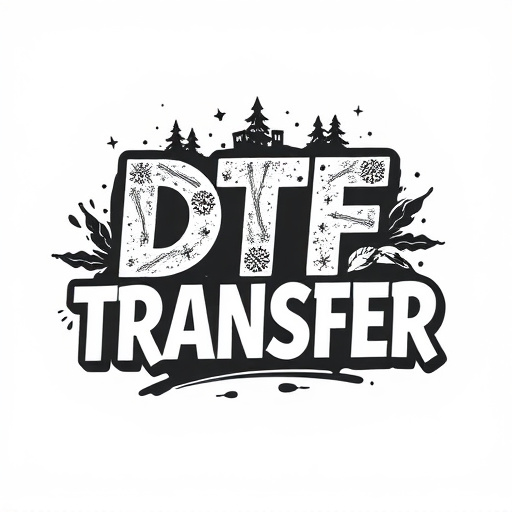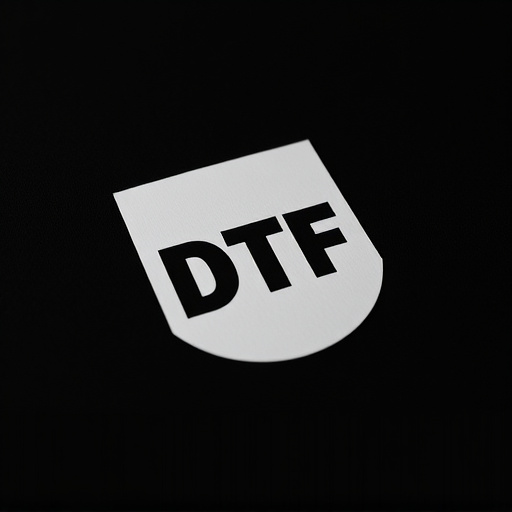Direct to Film (DTF) transfer technology revolutionizes the conversion of digital illustrations and designs into high-quality prints. By digitally scanning artwork and transferring it directly onto film stock, DTF ensures precise detail reproduction in prints, appealing to artists and filmmakers. The modern DTF process involves preparing artwork, digital scanning, data transfer to film, and creating positive prints from a master negative, resulting in exceptional DTF prints. This technique offers a diverse range of applications, delivering exceptional image quality, vibrant colors, and long-lasting durability while preserving the original artist's vision.
Transform your detailed illustrations and designs into captivating film transfers with DTF (Direct to Film) technology. This cutting-edge process revolutionizes traditional printing, enabling artists and creators to produce high-quality, vibrant prints directly from digital art. From understanding the DTF transfer process to mastering print techniques, this article delves into the world of DTF Printing, exploring its evolution, applications, best practices, and common pitfalls to help you achieve stunning results.
- Understanding DTF Transfer: A Process Overview
- The Evolution of DTF Printing Technology
- Preparing Your Artworks for DTF Transfer
- Mastering the DTF Print Techniques
- Applications and Benefits of DTF Transfers
- Best Practices and Common Pitfalls to Avoid
Understanding DTF Transfer: A Process Overview

The DTF (Direct to Film) transfer process is a cutting-edge technique revolutionizing the way traditional illustrations and designs are brought to life on screen. It offers an innovative approach to DTF printing, enabling direct imaging onto film stock, resulting in high-quality, precise prints. This method is particularly appealing for artists and filmmakers who seek authentic, detailed representations of their creative works.
The process begins with preparing the artwork, whether it’s a meticulously crafted illustration or a complex design. This art is then digitally scanned, ensuring every intricate detail is captured accurately. The digital data is subsequently transferred onto a special film stock, which serves as the master negative. This negative is then used to create positive prints, offering an exact replica of the original artwork in the form of DTF prints.
The Evolution of DTF Printing Technology
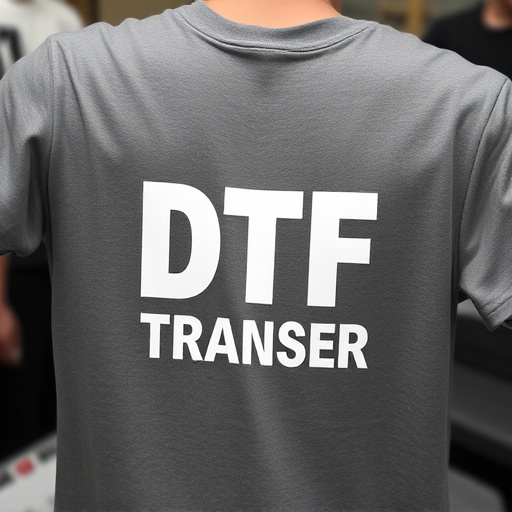
The evolution of Direct to Film (DTF) printing technology has revolutionized the way detailed illustrations and designs are transformed into film transfers. This cutting-edge process eliminates the need for intermediate steps, enabling artists and designers to achieve high-quality, precise prints directly onto film stock. Historically, traditional printing methods involved multiple stages, from creating negatives to making final prints, often resulting in decreased clarity and detail. DTF Transfer changes this by allowing for direct exposure of the design onto film, preserving intricate details and vibrant colors.
With advancements in technology, modern DTF Printing systems offer enhanced precision, speed, and versatility. These machines utilize specialized lasers or light sources to precisely burn the design into the emulsion-coated film, ensuring consistent and accurate results. The ability to handle various film formats and types has made DTF printing accessible for both professional artists and hobbyists, fostering a new wave of creative expression in the film photography community.
Preparing Your Artworks for DTF Transfer

Preparing your artworks for a Direct to Film (DTF) transfer is a meticulous process that ensures the best possible outcome. The first step involves ensuring your designs are high-resolution digital files, as this directly impacts the quality of the final prints. Use professional-grade graphic design software to create or edit your illustrations, maintaining a minimum resolution of 300 DPI (dots per inch) for optimal clarity.
Next, convert your artwork to a suitable file format like PDF or EPS, ensuring it includes all necessary elements such as line work, fills, and any special effects. It’s crucial to check for any potential issues like clipping paths or transparent areas that might cause problems during the DTF printing process. Proper preparation ensures that your intricate illustrations translate accurately onto film, making way for stunning, detailed prints.
Mastering the DTF Print Techniques
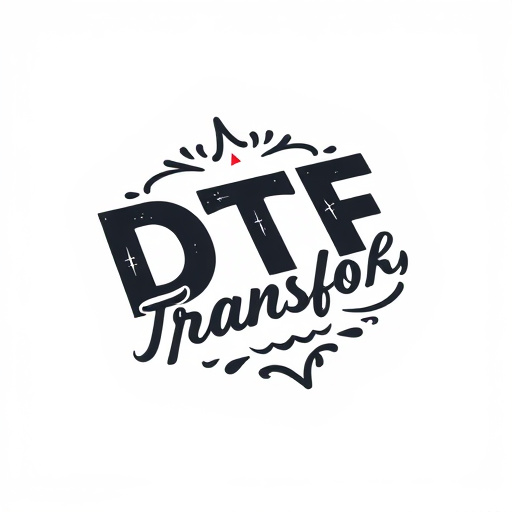
The art of transforming detailed illustrations and designs into captivating film transfers involves a meticulous process known as DTF (Direct to Film) printing. This advanced technique allows artists and creators to take their digital artworks, sketches, or even vintage prints and reproduce them accurately on various media. The DTF transfer process begins with the preparation of the original art, ensuring its high-resolution quality for optimal results. Skilled technicians then employ specialized equipment to precisely print the artwork directly onto a chosen substrate, whether it’s film, canvas, or other materials.
Mastering DTF printing requires an understanding of color theory, precision, and attention to detail. Technicians must calibrate the printers to reproduce colors accurately, ensuring that the final prints match the original art as closely as possible. The process involves multiple steps, including imaging, developing, and fixing, all done under controlled conditions to achieve crystal-clear, high-fidelity DTF prints. This meticulous craftsmanship ensures that intricate lines, subtle hues, and complex textures are faithfully translated from the digital realm to physical media, making DTF transfers a sought-after method for creating unique and visually stunning artistic reproductions.
Applications and Benefits of DTF Transfers

The applications of DTF (Direct to Film) transfers are diverse and ever-growing, revolutionizing the way we preserve and share visual art. This innovative printing technique enables the reproduction of detailed illustrations and designs onto various media, such as canvas, paper, or even metal. From fine art enthusiasts to professional graphic designers, DTF offers a unique way to create high-quality prints with intricate details that were once challenging to achieve.
Benefits of DTF Transfers include exceptional image clarity, vibrant colors, and remarkable durability. By eliminating the need for intermediate steps like scanning or digital manipulation, DTF ensures that the original artwork’s integrity is preserved. This makes it a preferred choice for creating archival-quality prints, ensuring that the beauty and precision of intricate designs are captured perfectly. Additionally, DTF printing allows for customization, enabling artists to experiment with different substrates and finishes, thereby adding a personal touch to their creations.
Best Practices and Common Pitfalls to Avoid
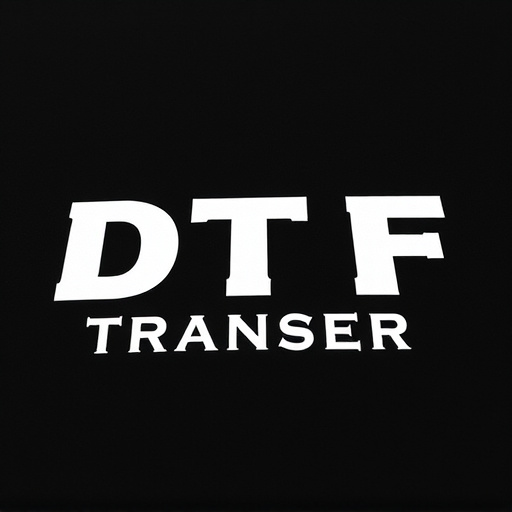
When transforming detailed illustrations and designs into film transfers via DTF (Direct to Film) techniques, there are best practices to follow for optimal results. Firstly, ensure your design is high-resolution with sharp lines and clear details. This significantly improves the quality of the final DTF prints. Additionally, calibrate your equipment accurately to maintain consistent color accuracy across all prints. Choosing the right medium (ink or paint) compatible with your film also plays a crucial role in achieving vibrant and precise colors in your DTF transfer.
However, several common pitfalls can detract from the process if not addressed. Avoid low-resolution designs as they may result in blurry or pixelated prints. Misalignment during the transfer process can lead to off-center or distorted images. Moreover, improper cleaning of the film after each use can cause buildup and affect subsequent transfers. Remember that consistent preparation and care are key to successful DTF Printing, ensuring each transfer is a high-quality reproduction of your original design.








